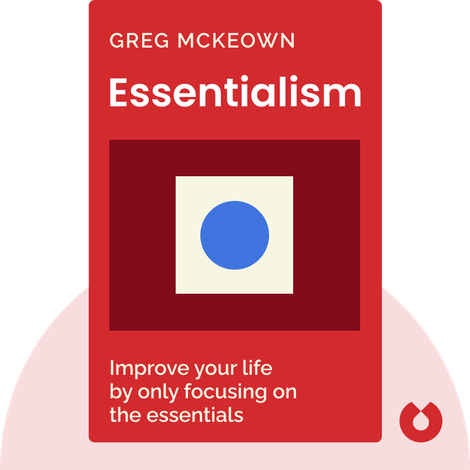فهرست مطالب
خلاصه صوتی (بلینکیست)
Introduction
no text!
Key idea 1 of 7
Far from being a weakness, vulnerability is an essential asset for innovation.
Let’s start this Blink by asking a bold question: what makes you feel vulnerable? Brené Brown has asked this question to thousands of individuals over the years. Most of the time, she gets the answers you’d connect with. Vulnerability is the first date after your difficult divorce, it’s starting to run your first business, or it’s how you feel when you get laid off from work. As these answers show, vulnerability is a universal human emotion. We feel it when we expose ourselves to others and experience times of risk or uncertainty.
But, even though vulnerability is such a common feeling, we aren’t always clear on what vulnerability is and – perhaps more crucially – what it isn’t. Because one thing that vulnerability certainly isn’t is a weakness.
Of course, experiences that make you feel vulnerable, like losing a job or putting yourself out there emotionally, can bring feelings of anxiety, uncertainty, and a desire for self-protection. However, there is no single piece of empirical data to suggest that vulnerability is associated with weakness. In fact, the opposite is true: acts of courage are impossible if you don’t first put yourself in a vulnerable position.
Okay, so you might not be convinced yet. Well, let’s give another example.
In 2014, Brené Brown stood in a room of special forces military personnel. She first explained to them that vulnerability is the emotion that accompanies risk and uncertainty. Then, she asked these brave, tough soldiers whether any of them had ever undertaken or witnessed a courageous act that did not require them to feel vulnerable.
Not one of the soldiers could come up with a single example of courageousness in which vulnerability hadn’t come along for the ride. To be clear: as soon as the audience focused on their actual courageous experiences, the myth of vulnerability and weakness crumbled.
Vulnerability isn’t just essential to courage. It’s the cornerstone of human innovation and creativity. Let me explain: As you probably know, creativity is a tricky thing to manage. You never quite know when it will strike. You also don’t really know if your ideas will actually turn out to be any good. To put it bluntly, being creative requires you to fail – often, you might need to fail multiple times.
The risk of failure and the uncertainty it brings along requires you to be vulnerable. Any society that equates vulnerability with weakness will put people off trying to innovate. If you’re scared to fail, you’ll struggle to produce new ideas or fresh perspectives.
Let’s give the final word to Golden Globe-winning actress and writer Amy Poehler. Poehler points out that it’s very difficult to let yourself be vulnerable, and those who can are often society’s dreamers, thinkers, and creators.
Key idea 2 of 7
Courageous leaders give and solicit honest feedback.
In the early days of starting her own company, Brené Brown’s employees asked if they could sit down with her. They had some concerns, and they wanted to discuss them with her. She was stunned as she listened to her employees tell her how bad they thought she was at time management. They also pointed out that she had an unhealthy habit of setting unrealistic deadlines that the team struggled to meet.
These criticisms were hard to hear. But Brené Brown was grateful for the honest feedback. She knew that being clear is being kind.
Being clear to be kind is something we should all remember. Communicating with a spirit of clarity and honesty – both at home and in the workplace – is a simple yet transformative step that all leaders should take.
But how many of us do this? The research shows that the majority of us avoid being clear when talking to others. We feel it’s kinder to avoid being honest.
Of course, we may tell ourselves that we feed people half-truths to make them feel good. But let’s be honest; we avoid honest and confrontational conversations because they make us uncomfortable. But clear communication will always be far kinder and more productive in the long run. After all, if you fail to be clear about your expectations for a subordinate simply because doing so is difficult, you’ll likely just end up blaming them for failing to deliver further down the line.
Communication is also about encouraging openness. Brené Brown has spent years studying leaders. One of the most important things that she’s discovered is that leaders need to spend a significant amount of time communicating about their subordinates’ feelings and fears. If they don’t do this, they can expect to spend even more time attempting to manage their workforce’s unproductive and ineffective behavior.
But asking team members about their fears and feelings is just one side. Leaders have to listen – and we mean reallylisten – to their responses.
If you ask someone about their true feelings, leave a lot of empty space and drawn-out pauses for them to answer. In other words, try to stop talking. You’ll probably notice how uncomfortable all those awkward silences sound at first. But have faith that, when they’re ready, the other person will fill the quiet with their true thoughts.
When they do begin talking, don’t start mentally formulating a response right away. Instead, concentrate on listening to their concerns. Just remember that they are being kind enough to be clear with you – return the favor by really listening to them.
Key idea 3 of 7
Core values anchor and guide daring leadership.
The modern workplace can often feel like a gladiatorial arena. Sure, it’s not a matter of life and death, but it can feel like a battle for supremacy that requires bravery and plenty of blood, sweat, and tears.
When faced with the stress and tension of the battle, it’s tempting to throw up our hands and exit the arena.
But how can we find the strength to keep going? By using our values.
When we find ourselves face down in the dirt, it’s our values that motivate us to get back up again and keep daring to give it our all.
Our values inform our judgments about what is most important in our lives. The most courageous leaders that Brené Brown came across during her research were those who really knew what their values were. During times of uncertainty and vulnerability, these people used their values like a ‘North Star’ to help guide them through periods of darkness. This also meant that they were more willing to take risks; they were secure in the knowledge that their values would guide them without compromising their integrity. In short, knowing what was most important to themselves enabled them to be daring leaders.
So I’d like you to take the time to ask yourself: What are yourkey values?
When making your list, you’ll likely come up with a load of answers at first. But try and just note down two things. Brené Brown narrowed hers down to the key values of courage and faith. Why two? After interviewing hundreds of global executive leaders, Brown found that most leaders identify ten or more core values. But – The leaders most willing to experience vulnerability and demonstrate courage anchored themselves to no more than two. And It makes a lot of sense if you think about it – two values are actionable. If you have a long list of values, none of them can genuinely drive your behavior. Too many values, and you’re left with a meaningless list of words designed to make you feel good.
So, come up with just your two most important values, and let them guide your behavior, especially when times are tough.
Key idea 4 of 7
Trust is an important and multifaceted aspect of our working relationships.
How trustworthy do you think you are? Tough one, right? Okay, now, here’s another question: how many people do you truly trust?
When we’re asked the first question, most of us answer that we ourselves are entirely trustworthy. But when we’re asked the second: we answer that we only trust a small number of people. It seems that most of us have some trust issues to work on.
In order to improve our trust in others, we first need to ask ourselves: What does trust actually mean?
To answer this, Brené Brown and her team of researchers took a look at the nature of trust. They pinpointed seven separate behaviors that encourage trust. Put together these seven behaviors form the acronym BRAVING.
Let’s start with the B. This stands for boundaries. This element of trust involves respecting others’ boundaries. If either you or someone else is unsure of the other’s boundaries, you need to ask whether or not something is okay.
Next, we have R, which stands for reliability. Reliability means that we do what we say we will. In a work context, reliability translates into being aware of our abilities and limitations so that we don’t end up overpromising and under-delivering on commitments.
The A stands for accountability. We take ownership of our mistakes, apologize for them and try our best to make amends.
Next is V. V stands for vault. We can think of ourselves as a vault of information that other people have shared with us over time. An important aspect of trust is not passing on information that is not ours to pass on. Other people need to trust that we will keep their confidence.
The I stands for integrity – it means choosing courage instead of comfort, and doing what is right rather than what is easy, fun, or expedient. It also means practicing the same values that we preach.
The N stands for non-judgment. This means people know that they can tell us how they really feel or ask for help without expecting us to judge them for doing so.
Finally, we have G, which refers to generosity. This means being consistently generous in our interpretation of the words, actions, and intentions of others. People are more likely to trust us if they know we always see the best in others, rather than the worst.
This is a lot: Just remember the BRAVING acronym and implement the behaviors behind each letter. Do this and you’ll create more trust in others and become more successful as a leader.
Key idea 5 of 7
Learning how to fail helps us to be brave.
Skydivers are brave fellows. Throwing yourself out of a plane and plummeting to the ground – on purpose – takes guts. But the risk skydivers take performing their hobby isn’t taken blindly. There is a lot of preparation before a skydiver takes the leap. For example, aspiring skydivers spend numerous training sessions simply learning how to hit the ground safely by jumping off ladders.
Believe it or not: Business leaders could learn a lot from those skydivers.
We’re being a bit cryptic, so let’s make it clearer: If you’re going to be brave, then it’s best to prepare yourself for bumpy landings. In other words, you need to learn how to be resilient.
Things are done differently in business compared to skydiving. Leaders and leadership coaches are usually aware of the need for resilience training, but these skills are usually taught only aftera failure or crisis has already happened. Think about it: It’s like teaching newbie skydivers the right way to hit the ground afterthey’ve already landed! Or, even worse, when they’re already in free-fall.
Of course, there is a better way. Research shows that when it comes to teaching leaders the skill of resilience, timing is everything. Specifically, teaching them early on as part of a wider training program is more likely to result in them demonstrating courageous behaviors. There is a simple reason for this: they are confident in their ability to get back up again if their daring behavior doesn’t pay off. Companies that fail to instill these resilience skills in their workforce are effectively deterring their leaders, both present and future, from bravery.
Some organizations may worry that teaching leaders how to fail from the get-go promotes a culture of low expectations. But, the opposite is true. In Brené Brown’s own company, she makes it a priority to teach failing and resilience skills as part of the onboarding process. It’s the company’s way of telling new joiners that bravery is expected, and that failure is also expected once in a while.
This emphasis on resilience is nothing new. You may have seen company slogans urging you to “fall forward” and “fail fast!” But without a resilience skills program to back them up, these slogans are less than useless. In fact, they can do more harm than good. Leaders who fail without the resilience skills to cope quickly find themselves dealing with a double dose of shame – the shame of the initial failure quickly followed by the shame of struggling to pick themselves up again despite all the shouty motivational slogans urging them to learn and move on.
Key idea 6 of 7
Perfectionism holds us back from self-improvement and true courage.
Right from childhood, we seek to shield ourselves from vulnerable feelings like disappointment, hurt, and diminishment. We build a protective wall from behaviors, emotions, and thoughts, and use it to protect ourselves from the big bad world.
But to live and lead with courage, as we’ve already learned, we must let ourselves be vulnerable. So, we need to let down our walls and recognize our protective thoughts and behaviors for the defense mechanisms they really are.
Let’s look at one of these protective thoughts and behaviors in more detail.
One of the most pervasive types of self-protection is perfectionism. We must rid ourselves of perfectionism if we are to have any hope of becoming daring leaders. To do this, we need to bust the myths around this damaging phenomenon.
Perhaps the most damaging myth of all is that perfectionism is about self-improvement and striving for excellence. This is very wrong: perfectionism is really about attempting to win approval. Most perfectionists are raised in environments that praise their exceptional performance – just think of how you were praised in sports or at school. As a result of this praise, perfectionists develop a damaging belief system that follows them into their adult lives: they anchor their whole sense of self in their accomplishments and brilliant execution.
All of this locks perfectionists into an exhausting behavioral pattern of pleasing people, perfecting efforts, performing for others, and proving themselves. People with a healthy drive for success, on the other hand, are more self-focused. They inspire themselves by asking how they can improve. It’s a stark contrast with perfectionists, who ask ‘what might others think of me?’
But there is even a darker side to perfectionism, something that goes way beyond the need to please.
Research shows that perfectionism is associated with addiction, depression, and anxiety. Furthermore, perfectionists are more likely to miss opportunities and experience mental paralysis that keeps them from fully engaging. Their fears of being criticized or not meeting the expectations of others keep them from entering the messy arena of life, where healthy competition and striving for true greatness occur.
So, to become a daring leader, take off the armor of perfectionism and jump into the fray. You might make mistakes in the process, but you’ll gain something valuable in exchange: the courage to succeed and lead.
Key idea 7 of 7
The key message in these blinks:
When we open ourselves up to vulnerability, we open ourselves up to courage and creativity. When we let go of our perfectionist tendencies and our fear of failure, we find the bravery to improve ourselves and to have difficult, important conversations with our colleagues. In other words, we need all of our emotions on board if we’re going to become daring leaders.
Actionable advice:
Explore your feelings instead of numbing them.
Our knee-jerk response when experiencing vulnerability is often to try to make it go away. We usually numb ourselves, with whatever we have at hand – whether it’s alcohol, comfort eating or shopping. But before you dive into that big glass of wine or tub of ice cream, ask yourself: What is it I’m actually feeling, and where has this feeling come from? Once you’ve identified the real problem, you can work out what will bring you real comfort and relief from it








